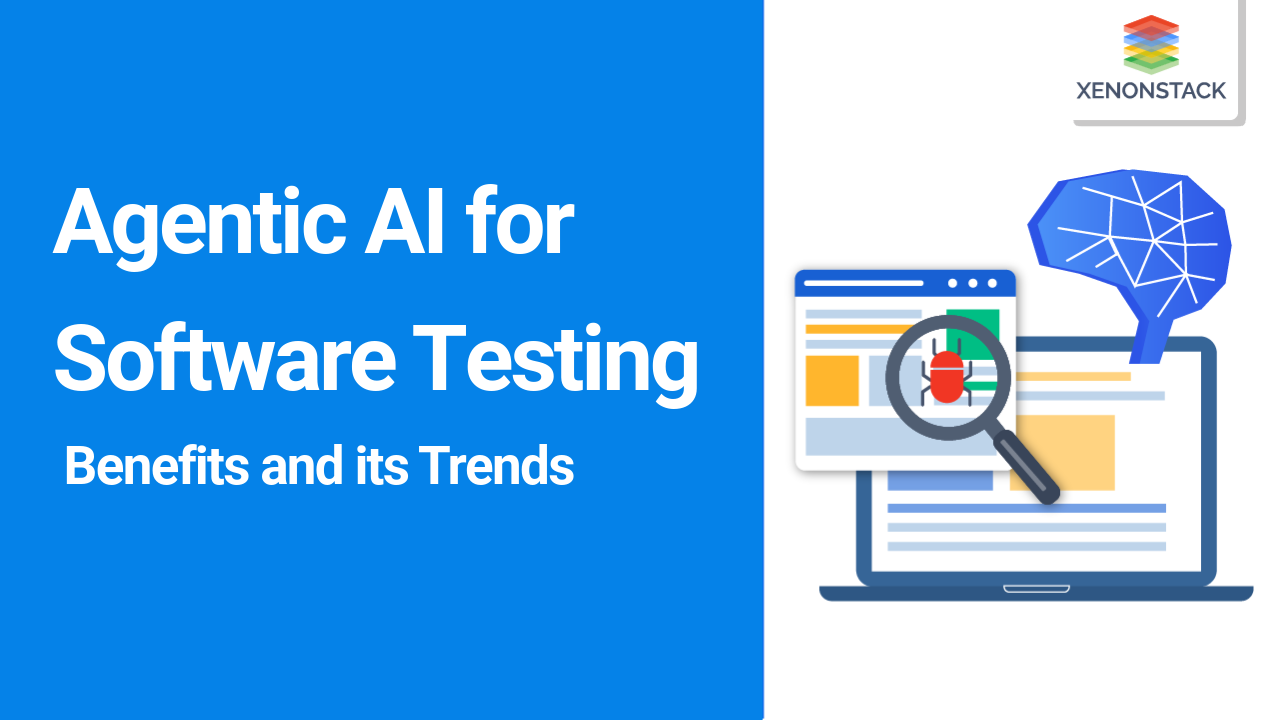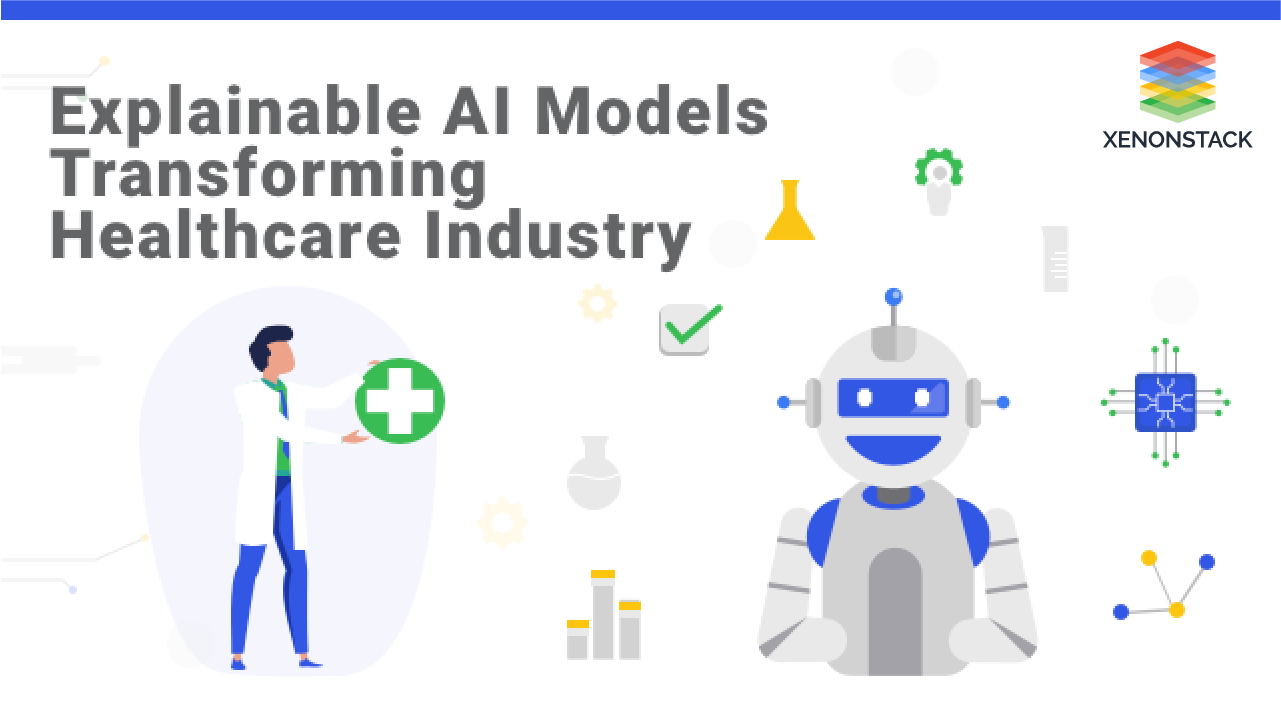
The evolution of software testing has witnessed a significant shift from manual testing to automation. However, the next frontier in quality assurance (QA) is Agentic AI-driven testing—an approach where AI-powered agents autonomously generate, execute, and optimize test cases. This paradigm shift redefines software quality assurance, enabling faster, more efficient, and continuous testing processes.
In this blog, we explore how Agentic AI transforms software testing, its impact on the Software Development Lifecycle (SDLC), key trends, and the numerous benefits that make it a game-changer for enterprises.
What is Agentic AI in Software Testing?
Agentic AI refers to autonomous AI-driven agents that make decisions, learn from testing outcomes, and refine software testing strategies without human intervention. Unlike traditional automation testing, which relies on predefined scripts, Agentic AI testing involves AI agents that:
- Generate test cases dynamically based on code analysis, historical bugs, and real-world user interactions. These agents use deep learning models to analyze software architecture and predict potential failure points, ensuring maximum test coverage.
- Execute tests autonomously, adapting to software changes in real-time. Continuously monitor application behaviour and modify test scenarios accordingly, eliminating the need for manual script updates.
- Analyze results and optimize QA strategies, continuously improving accuracy and test coverage. These agents prioritize critical issues and refine testing strategies over time through intelligent defect clustering.
- Self-learn from previous tests, reducing false positives and negatives over time. Agentic AI enhances test reliability and precision by leveraging pattern recognition and anomaly detection.
By leveraging Machine Learning (ML), Natural Language Processing (NLP), and Reinforcement Learning, these intelligent agents offer a level of adaptability and efficiency unmatched by traditional testing methodologies. This approach enables organizations to accelerate software releases, reduce testing costs, and improve product quality.
The quality assurance and software testing process of software development is as necessary as the actual code had written. Click to explore about, Software Testing Best Practices
Key Trends in Agentic Testing
-
Shift from Rule-Based to Learning-Based Testing: Traditional test automation followed rigid rules, but modern agentic testing leverages machine learning to adapt dynamically, improving efficiency and accuracy.
-
Self-Healing Test Automation: Intelligent systems detect UI, API, and code changes and update test scripts automatically, reducing maintenance efforts and ensuring uninterrupted execution.
-
AI-Driven Test Coverage Optimization: Instead of executing redundant test cases, agentic systems analyze risk factors and prioritize high-impact scenarios for efficient testing.
-
Autonomous Security & Performance Testing: AI-powered agents independently identify vulnerabilities, conduct performance assessments, and ensure compliance without manual intervention.
-
Generative AI for Test Data Management: AI models create synthetic test data based on real-world patterns, improving test coverage while maintaining privacy and compliance.
-
Predictive Defect Analysis & Root Cause Detection: Agentic systems analyze historical data and real-time execution patterns to predict defects early and pinpoint their root causes faster.
-
Seamless Integration with DevOps & CI/CD Pipelines: AI-driven testing works in sync with Agile, DevOps, and continuous integration workflows to enable real-time quality assurance.
-
Hybrid Human-AI Collaboration in Testing: Instead of replacing testers, agentic AI enhances human decision-making by automating repetitive tasks and providing intelligent insights.
How Agentic AI Transforms the Software Development Lifecycle (SDLC)
1. AI-Augmented Test Case Generation
Traditional test case creation is time-consuming and often incomplete. Agentic AI automatically analyzes source code, historical defects, and real-time application behaviour to automatically generate robust test cases. It ensures:
-
Higher test coverage with minimal human effort: AI scans the application codebase, user workflows, and past failures to create comprehensive test scenarios.
-
Detection of edge cases that manual testers might overlook: AI algorithms simulate real-world user behaviours, ensuring rare but critical issues are identified.
-
Reduction in redundant and ineffective test cases: AI optimizes test suites by eliminating duplicate and low-value test cases, leading to efficient execution.
2. Autonomous Test Execution & Adaptation
AI-driven agents execute test cases autonomously and dynamically adapt to software changes. Unlike script-based automation that requires manual intervention for updates, Agentic AI:
-
Continuously adapts test scripts based on software modifications: AI updates test scripts whenever there are UI, API, or backend changes, reducing the need for manual script maintenance.
-
Supports self-healing automation, reducing maintenance overhead: When an application’s UI or functionality changes, AI automatically updates test cases instead of breaking the test suite.
-
Enhances efficiency by running parallel test executions across environments: AI optimally distributes test execution across multiple environments, including devices, operating systems, and cloud platforms.
3. Continuous and Intelligent Testing
Agentic AI seamlessly integrates into CI/CD pipelines, enabling real-time feedback loops for continuous testing. It:
-
Detects defects earlier in the development process: AI identifies potential issues before they impact production, reducing defect leakage.
-
Provides predictive analytics to anticipate potential failures: AI models analyze historical test data and production logs to predict areas prone to failure.
-
It supports A/B testing, performance testing, and security testing in real time: AI automatically sets up and runs experiments, stress tests, and security vulnerability assessments, providing insights into software resilience.
4. AI-Driven Test Optimization and Self-Learning
Traditional test optimization relies on manual analysis, but AI-driven agents:
-
Learn from test execution data to improve future test runs: AI refines test cases based on execution history, optimizing performance over time.
-
Prioritize high-risk areas, reducing unnecessary test cycles: AI analyzes defect trends to focus on testing the most vulnerable parts of the application.
-
Leverage historical defect patterns to predict vulnerabilities: AI uses past data to identify recurring failure patterns and proactively address them in new releases.
Benefits of Agentic AI in Software Testing
-
Continuous and Faster Test Execution: Intelligent automation enables real-time test execution, reducing testing time and accelerating software releases. Seamless integration with CI/CD pipelines ensures quick feedback for developers.
-
Improved Software Quality and Reliability: Advanced testing increases coverage, detects critical defects early, and minimizes human errors. Analyzing historical data enhances reliability and reduces post-release issues.
-
Reduced Test Maintenance Effort: Self-healing automation adapts to UI and API changes, reducing the need for manual script updates. This minimizes test failures and allows teams to focus on exploratory testing.
-
Cost Efficiency & Resource Optimization: Automated testing lowers manual efforts and optimizes infrastructure usage by running tests in parallel. It enhances resource utilization and minimizes operational expenses.
-
Scalability & Adaptability: Autonomous testing scales effortlessly across different environments, applications, and platforms. It ensures consistent test execution across cloud-native, enterprise, and legacy systems.
-
Enhanced Security & Compliance: Intelligent security testing identifies vulnerabilities and ensures compliance with standards like GDPR and HIPAA. Continuous monitoring strengthens software security against cyber threats.
Manual Software Testing VS Agentic AI Software Testing
|
Feature |
Manual Software Testing |
Agentic AI Software Testing |
|
Test Case Creation |
Manually written by testers based on requirements. |
AI dynamically generates test cases using ML and historical data. |
|
Test Execution |
Requires human intervention to test cases. |
Fully autonomous execution with AI-driven agents. |
|
Adaptability |
Scripts need manual updates when the software changes. |
AI adapts to changes in real-time with self-healing automation. |
|
Speed & Efficiency |
Slower due to manual effort. |
Faster execution with parallel and continuous testing. |
|
Coverage & Accuracy |
Limited by human ability and time constraints. |
Higher test coverage with intelligent defect detection. |
|
Self-Learning Capability |
No learning capability; relies on tester expertise. |
AI learns from past test executions and optimizes over time. |
|
Maintenance Effort |
High maintenance due to frequent script updates. |
Low maintenance as AI updates test scripts dynamically. |
|
Scalability |
Difficult to scale due to human resource limitations. |
Easily scalable across multiple applications and environments. |
|
Cost Efficiency |
Higher costs due to manual labour and test maintenance. |
Cost-effective by reducing manual effort and increasing automation. |
|
Integration with DevOps |
Limited due to slower execution cycles. |
Seamlessly integrates into CI/CD pipelines for continuous testing. |
Top Tools of the Trade: Elevate Your Testing with AI Agents
To successfully harness the power of Agentic Testing, it’s essential to use top-tier tools that enable automation and improve testing efficiency. Here are some of the leading AI-driven testing tools:
1. AskUI Vision Agents
AskUI Vision Agents leverage AI to interact with graphical user interfaces (GUIs) using visual inputs. These agents automate complex workflows by recognizing and manipulating UI elements dynamically, making them highly effective for automating testing processes that involve visual decision-making. AskUI enhances efficiency and adaptability in software testing by eliminating the need for traditional scripting.
2. Virtuoso
Virtuoso is an AI-driven test automation platform that utilizes machine learning, natural language processing (NLP), and robotic process automation (RPA) to create and execute tests with minimal human intervention. As a low-code/no-code solution, it enables faster test generation and intelligent self-healing capabilities, ensuring continuous testing without the maintenance overhead of traditional automation frameworks.
3. Testsigma
Testsigma is a cloud-based, AI-powered test automation tool designed for web, mobile, and API testing. It integrates seamlessly with CI/CD pipelines, making it ideal for continuous testing in Agile and DevOps environments. The AI-driven engine enhances test execution speed and accuracy by analyzing historical test data and predicting high-impact areas requiring focused testing, improving overall test coverage and software quality.
4. UiPath Agentic Testing
UiPath offers an agentic testing platform that enables end-to-end automation with built-in AI capabilities. It includes the UiPath Agent Builder, allowing testers to create customized AI agents tailored to specific testing needs. With a focus on self-healing automation and intelligent test execution, UiPath Agentic Testing ensures resilience in fast-changing software environments, reducing manual intervention and improving test reliability.
5. TestForge
TestForge is an AI-driven unit testing framework that automatically generates and optimizes test cases using a feedback-driven learning approach. It iteratively refines test cases based on execution results and coverage reports, making testing more efficient and accurate over time. By leveraging AI for defect detection and root cause analysis, TestForge helps software teams maintain high-quality code while reducing the effort required for test maintenance.
These tools represent the next generation of AI-powered testing, enabling autonomous, intelligent, and adaptive quality assurance processes in modern software development.
Use Cases for Autonomous Software Testing
Some of the use cases of generative agents/technologies for software testing are:
Image generation and manipulation
-
This is the case for generating or manipulating images for testing purposes, such as generating synthetic images for testing computer vision systems or manipulating images for testing image processing systems.
-
For example, StyleGAN2 is a machine-learning model that can generate realistic and diverse images of faces, animals, landscapes, etc., based on a given style or attribute.
Software and coding
-
Generating or modifying software code for testing purposes, such as generating code snippets for testing programming languages or modifying code for testing software vulnerabilities.
-
For example, CodeGPT is a machine-learning model that can generate or complete code based on a given language or task.
Video creation
-
Generating or editing videos for testing purposes, such as generating synthetic videos for testing video analysis systems or editing videos for testing video editing systems.
-
For example, a First-Order Motion Model is a machine-learning model that can generate or animate videos based on a given image or video.
Synthetic Data Generation
-
Generative AI models are adept at creating vast amounts of synthetic data that closely resemble real-world data.
-
This is particularly useful in situations where privacy concerns or data scarcity limit the availability of actual data for testing purposes.
Automated Test Case Creation
-
By understanding software's requirements and functionalities, generative AI can automatically produce a variety of test cases, ensuring comprehensive coverage that includes edge cases often missed by manual processes.
Performance Benchmarking
-
Generative AI can simulate different load conditions to test software's performance under stress, providing insights into scalability and robustness.
Security Penetration Testing
-
AI-driven agents can intelligently probe systems to uncover potential security vulnerabilities, simulating cyber-attacks and other threat scenarios.
Future-Proofing Your Testing Strategy
Preparing Your Testing Approach for the Future Introducing Agentic Testing is a step towards strengthening and future-proofing your organization. Here are some suggested activities that you can incorporate and adapt to keep your software testing slicing-edge:
-
Hyperautomation in QA: Hyperautomation combines AI, agentic process automation (APA), and machine learning (ML) to achieve fully autonomous testing. This approach will minimize human intervention, ensuring faster and more accurate test execution.
-
Explainable AI in Testing: As AI becomes more integrated into software testing, there will be a greater emphasis on explainable AI (XAI), which enhances transparency and trust in AI-driven test decisions. XAI ensures that AI-based test outcomes are understandable, making it easier for teams to debug and refine automation strategies.
-
AI-Augmented Test Engineers: Rather than replacing testers, Agentic AI will augment human testers, allowing them to collaborate with AI agents to optimize test strategies. AI will handle repetitive tasks, while test engineers will focus on exploratory testing, risk assessment, and complex test scenarios that require human intuition.
As organizations embrace AI in software development, Agentic AI-driven testing will become a cornerstone of modern DevOps and Agile workflows. Today, businesses that invest in AI-driven test automation will gain a competitive edge by improving software quality, accelerating releases, and reducing operational costs.





